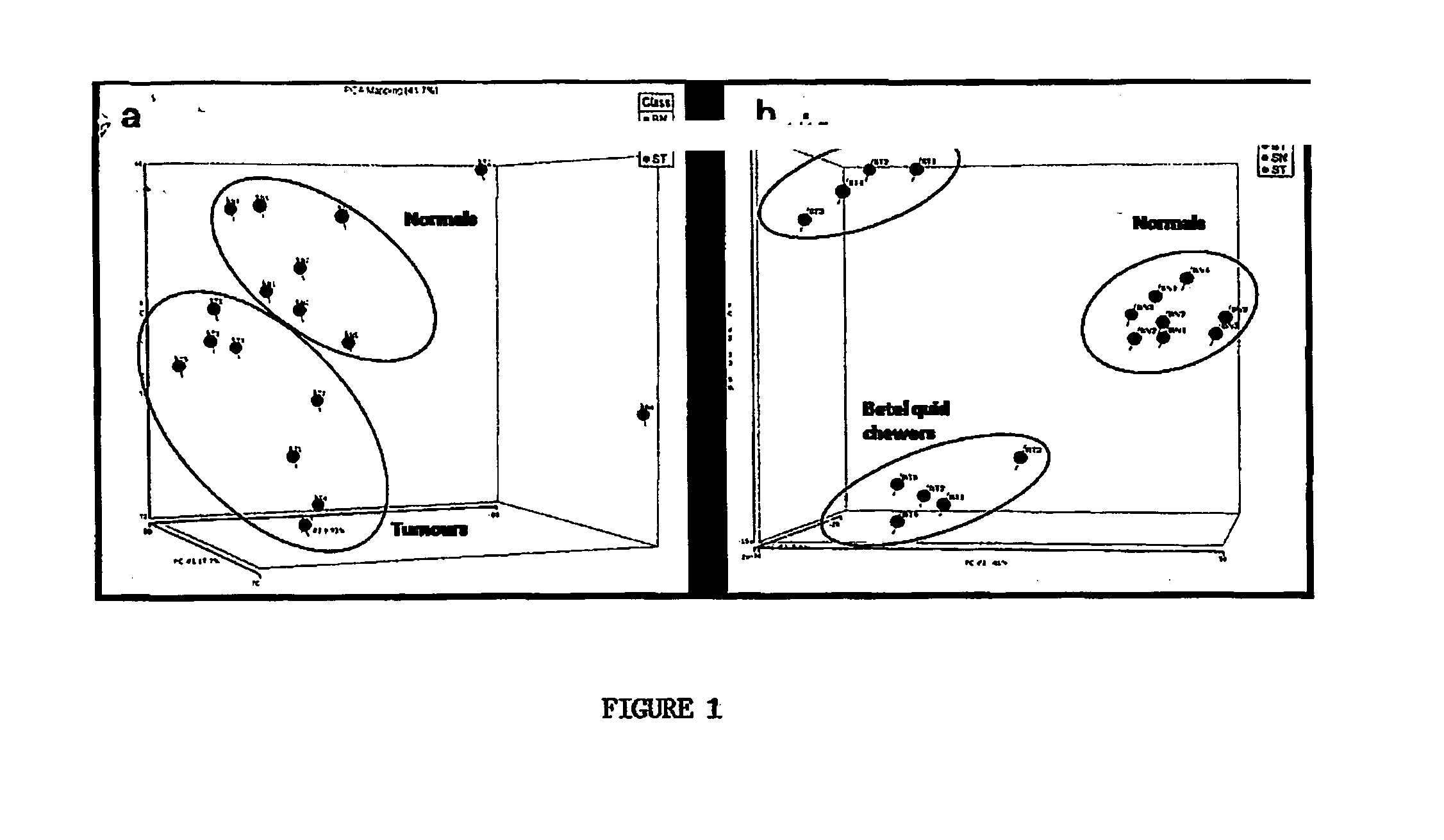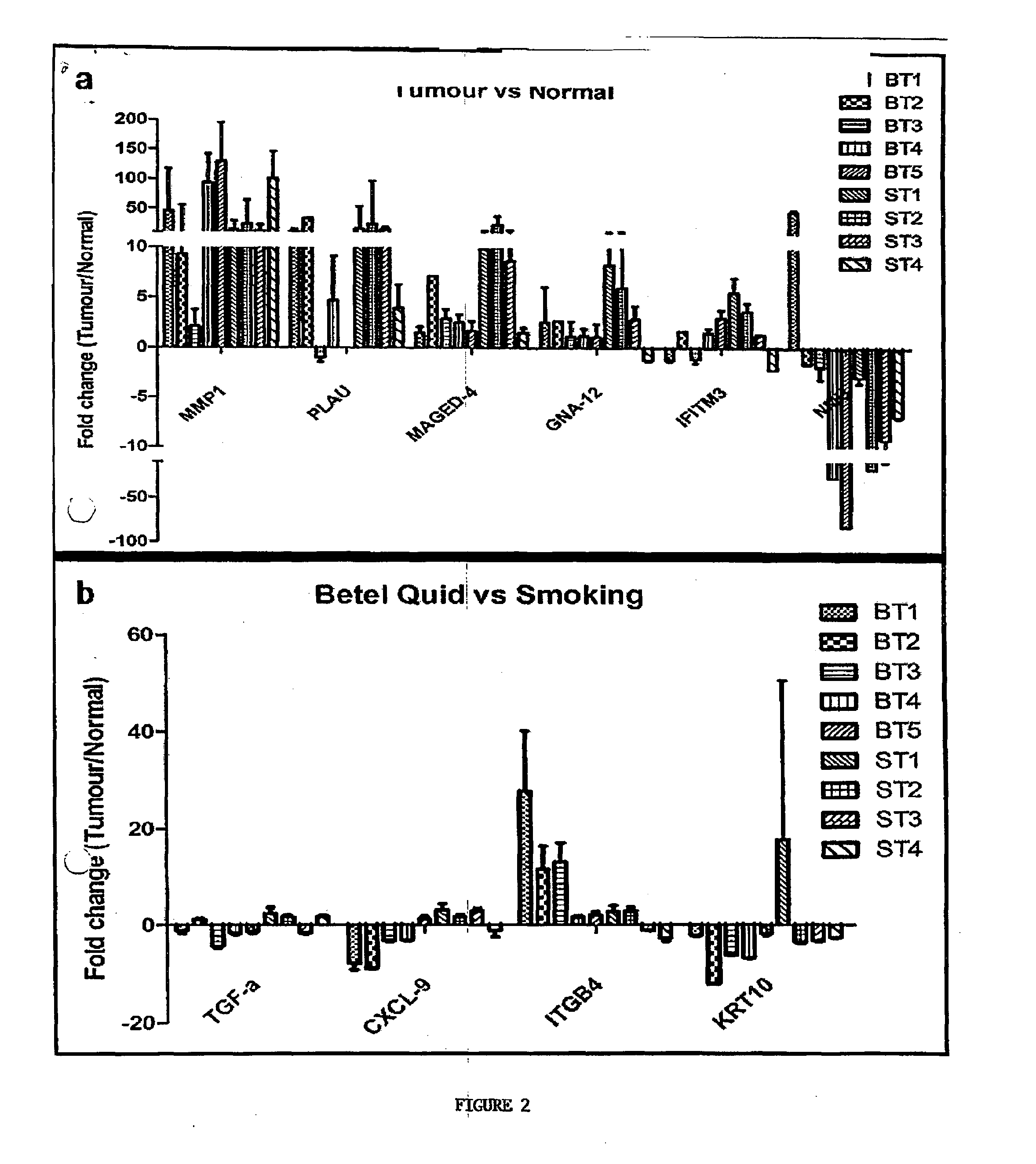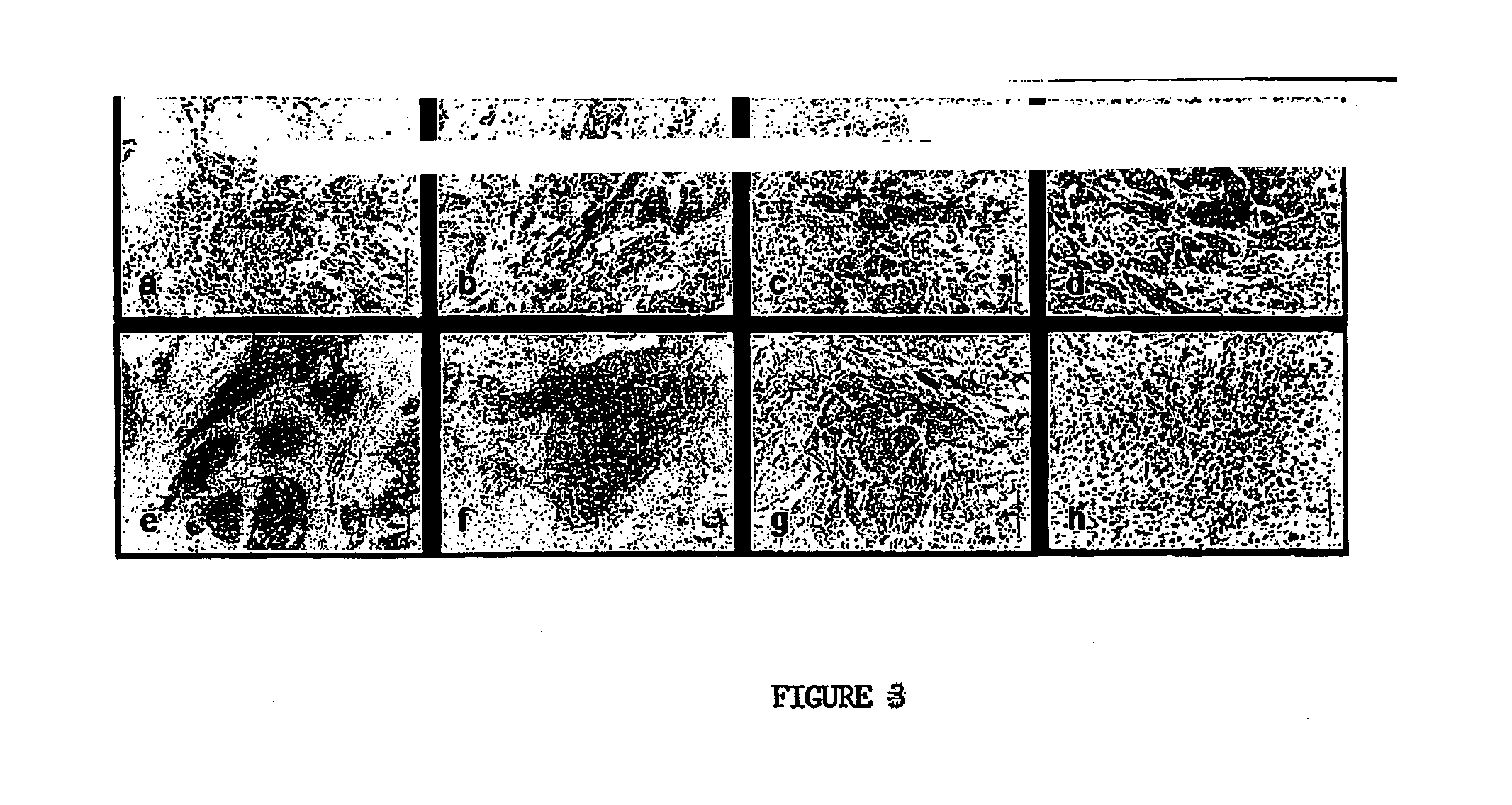Method of detection and diagnosis of oral and nasopharyngeal cancers
a nasopharyngeal cancer and oral cancer technology, applied in the field of cancer, can solve the problems that the survival rate and the prognosis of oral cancer patients have not improved significantly, and achieve the effects of enhancing the inherent binding specificity of antisense oligonucleotides characteristic of base pairing, increasing the resistance to degradation, and increasing the persistence of self-stabilized oligonucleotides in vivo
- Summary
- Abstract
- Description
- Claims
- Application Information
AI Technical Summary
Benefits of technology
Problems solved by technology
Method used
Image
Examples
Embodiment Construction
[0146]Materials and Methods
[0147]Tissue Specimens and Collection Procedure
[0148]Oral squamous cell carcinoma (OSCC) and normal oral mucosal tissue samples were obtained from patients who were treated surgically. Seventeen specimens were included in this study: 5 OSCC tissues were paired with 5 normal oral mucosae from the same individuals who were BQ chewers; 4 OSCC tissues were paired with 2 normal oral mucosae from the same individuals who were smokers; 1 normal oral mucosa was also obtained from an unrelated individual with a smoking habit. Informed consent was obtained from all individuals and this project was approved as part of a nationwide study on ‘Oral Cancer and Precancer in Malaysia’ by the Medical Ethics Committee, Faculty of Dentistry, University of Malaya (Medical Ethics Clearance Number: DP OP0306 / 0018 / L) and endorsed by the Ministry of Health, Malaysia. Tissue specimens in excess of diagnostic value were snap-frozen in liquid nitrogen and stored until use. The tumour...
PUM
| Property | Measurement | Unit |
|---|---|---|
| Electric potential / voltage | aaaaa | aaaaa |
| Immunogenicity | aaaaa | aaaaa |
| Level | aaaaa | aaaaa |
Abstract
Description
Claims
Application Information
 Login to View More
Login to View More - R&D
- Intellectual Property
- Life Sciences
- Materials
- Tech Scout
- Unparalleled Data Quality
- Higher Quality Content
- 60% Fewer Hallucinations
Browse by: Latest US Patents, China's latest patents, Technical Efficacy Thesaurus, Application Domain, Technology Topic, Popular Technical Reports.
© 2025 PatSnap. All rights reserved.Legal|Privacy policy|Modern Slavery Act Transparency Statement|Sitemap|About US| Contact US: help@patsnap.com



